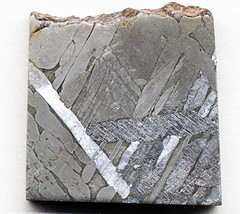Feverfew compound gets at leukemia roots
Wednesday, February 23, 2005A compound in the common daisy-like plant feverfew kills human leukemia stem cells and could form the basis for newer, more effective drugs for the disease.
American researchers at the University of Rochester Medical Center in New York say that it could take months to develop a useable drug from the compound, parthenolide.
However, they are working to do so with chemists at the University of Kentucky who have identified a water-soluble molecule with the same properties. The US National Cancer Institute has also accepted the work into its rapid access program, which aims to speed experimental drugs into human clinical trials.
“This research is a very important step in setting the stage for future development of a new therapy for leukemia,” says Rochester researcher Craig Jordan. “We have proof that we can kill leukemia stem cells with this type of agent, and that is good news.”
Parthenolide appears to target the roots of myeloid leukemia, stem cells, while current treatments including the relatively new drug Gleevec don’t. So, “You’re pulling the weed without getting to the root,” says Jordan.
Used for centuries to fight fevers, inflammation and arthritis, feverfew earned interest from the Rochester researchers after other scientists showed that it could prevent skin cancer in animal models.
So the researchers investigated how a concentrated form of the plant component parthenolide would affect leukemia cells and normal cells.
Comparing the impact of parthenolide to the common chemotherapy drug cytarabine, they found that parthenolide selectively killed leukemia cells while sparing normal cells better.
While the findings suggest that parthenolide is a good starting point for new drugs, people with leukemia aren’t being encouraged to take high doses of feverfew as they could not take enough of the remedy to halt the disease.
The research is reported in the journal Blood.
Wednesday, February 23, 2005A compound in the common daisy-like plant feverfew kills human leukemia stem cells and could form the basis for newer, more effective drugs for the disease.
American researchers at the University of Rochester Medical Center in New York say that it could take months to develop a useable drug from the compound, parthenolide.
However, they are working to do so with chemists at the University of Kentucky who have identified a water-soluble molecule with the same properties. The US National Cancer Institute has also accepted the work into its rapid access program, which aims to speed experimental drugs into human clinical trials.
“This research is a very important step in setting the stage for future development of a new therapy for leukemia,” says Rochester researcher Craig Jordan. “We have proof that we can kill leukemia stem cells with this type of agent, and that is good news.”
Parthenolide appears to target the roots of myeloid leukemia, stem cells, while current treatments including the relatively new drug Gleevec don’t. So, “You’re pulling the weed without getting to the root,” says Jordan.
Used for centuries to fight fevers, inflammation and arthritis, feverfew earned interest from the Rochester researchers after other scientists showed that it could prevent skin cancer in animal models.
So the researchers investigated how a concentrated form of the plant component parthenolide would affect leukemia cells and normal cells.
Comparing the impact of parthenolide to the common chemotherapy drug cytarabine, they found that parthenolide selectively killed leukemia cells while sparing normal cells better.
While the findings suggest that parthenolide is a good starting point for new drugs, people with leukemia aren’t being encouraged to take high doses of feverfew as they could not take enough of the remedy to halt the disease.
The research is reported in the journal Blood.


